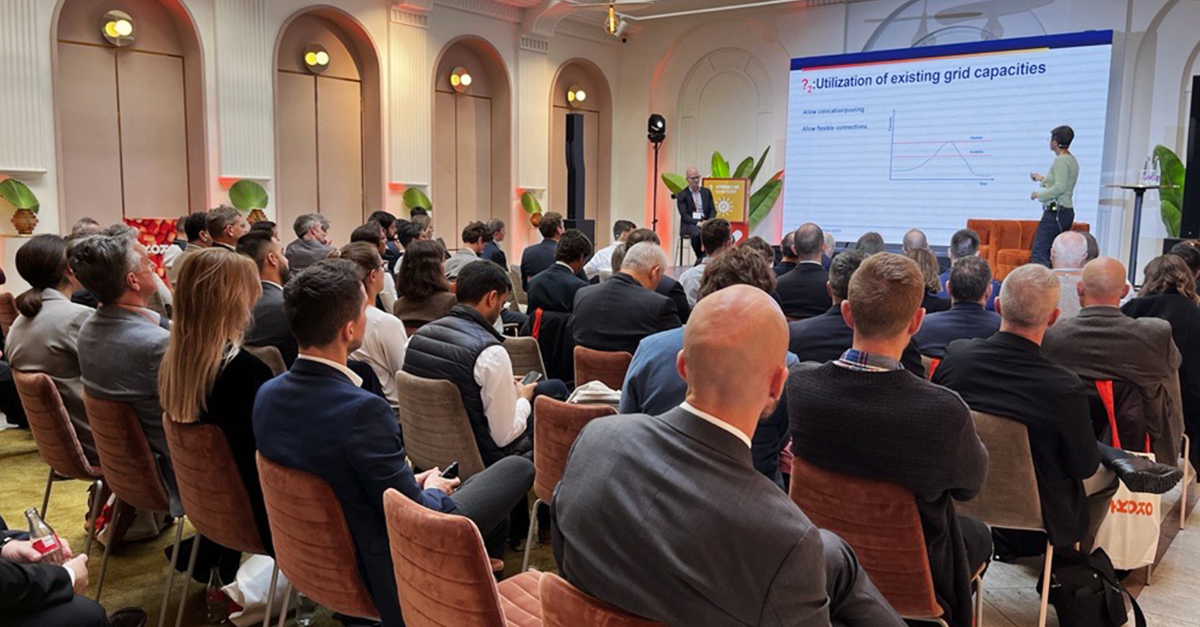Imagine a factory with a giant "power bank" charged with renewable energy when the availability is good and electricity prices low, a thermal energy storage. To be discharged as heat when sun and wind are scarce and prices high. Researchers Rafael Guédez and Silvia Trevisan at EGI work in a steaming hot field when the industry wants to get rid of fossil fuels and lower its energy costs.
Half of the energy we use is consumed as heat. The industrial sector spends about 22 percent of the global overall energy consumption on thermal energy. Almost all industries use heat: Textile, pulp, food and beverages, chemical industry, steel, and mining…; the two latter are huge heat consumers. And for all of them, fossil fuels are the primary energy source.
”But the energy market is changing, industries need and want to leave fossil fuels. Using electricity also to produce heat is a major pathway toward replacing fossil fuels,” says Rafael Guédez, researcher at the Department of Energy Technology.
A critical problem with renewable electricity is that the more sun and wind, the more electricity prices will fluctuate.
“Solar and wind power production deliver when there’s access, not necessarily when we need it. Sometimes this might be hard to predict, and more importantly, renewable power is often abundant while energy demand is limited and vice versa,” Rafael says.
That’s when you wish you had that power bank from renewables. To charge it with energy when wind or solar energy availability is good and electricity prices are low. And then you discharge it to provide heat during the parts of the day when the availability of renewable energy is limited, and electricity is expensive.

The heat bank exists, but Rafael and his research colleague Silvia Trevisan call it something else: Thermal energy storage, TES, a battery for the industry that can charge, store and then discharge the energy in the form of thermal energy.
”With the TES, we can decouple the heating demand from the immediate power availability. And by using this technology in the energy-intensive industrial sector, you can get a lot of impact from renewables, mainly by reducing CO2 emissions and operational costs. When the final requirement is heat it is more cost-effective and environmentally friendly to store in the form of heat directly rather than in conventional batteries first” says Silvia Trevisan.
Their research explores various storage technologies for the TES battery; what materials are the most cost-effective and efficient in the battery?
“We want to store heat in waste materials, such as metallic byproducts. That would add more circularity to the thermal batteries. We also look at natural materials like rocks, air and heat transfer fluids. This means significantly fewer problems and environmental risks than chemicals,” says Silvia.
What technique is the best depends on the temperature and energy needed. The duo at EGI specializes in high-temperature storage. Since many forms of heat are required, the solutions will look different depending on the purposes when you commercialize them, Silvia explains. And a company that wants a TES in its facilities needs to squeeze it in without interfering with the production.
“The systems can be big – the more energy needed, the bigger battery - but we want to keep them as small as possible. A major limitation in industries is space,” says Rafael.
Since July 2022, EGI has a cooperation with the Norwegian company Kyoto Group, which provides the industry with sustainable heat. The applications are similar to those explored by Silvia in her PhD, where she built a prototype of a thermal energy storage. Looking for expertise to develop the next generations of their technology Kyoto has turned to KTH.
“Kyoto are now funding the project “RIHOND” (Renewable Industrial Heat on Demand), which means one year of my post-doc,” says Silvia. “It’s nice to work outside the academia from time to time. You get involved in the whole process, from the research stage to the commercialization of products. You get to see your research’s full impact,” she says.
The timing for Rafael’s and Silvia’s research couldn’t be better – the energy price continues to rise, and the topic is hot.
“Today, a TES solution makes sense economically. This is not only a way for the industry to cut costs and get rid of the dependency on fossil fuels. For some, it’s going to be an opportunity to emerge as leaders in their sector”, says Rafael.


